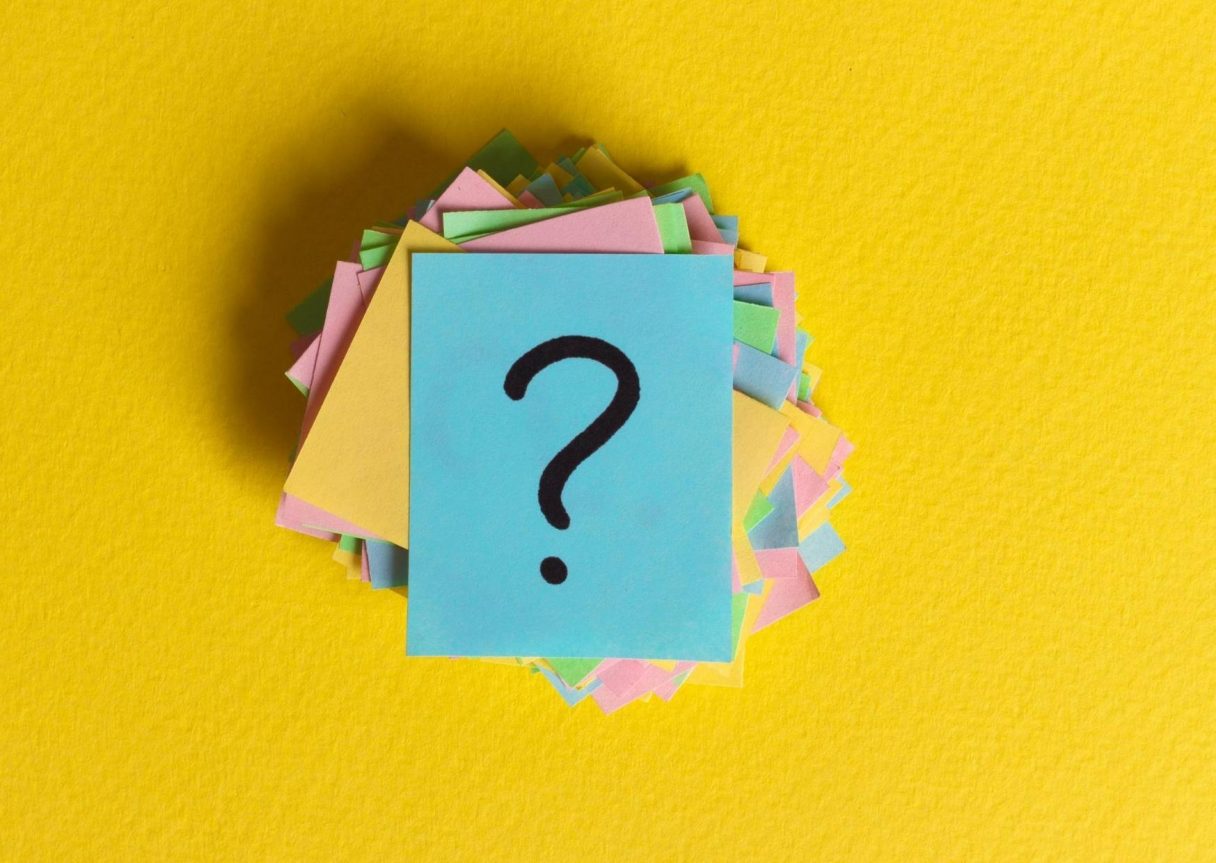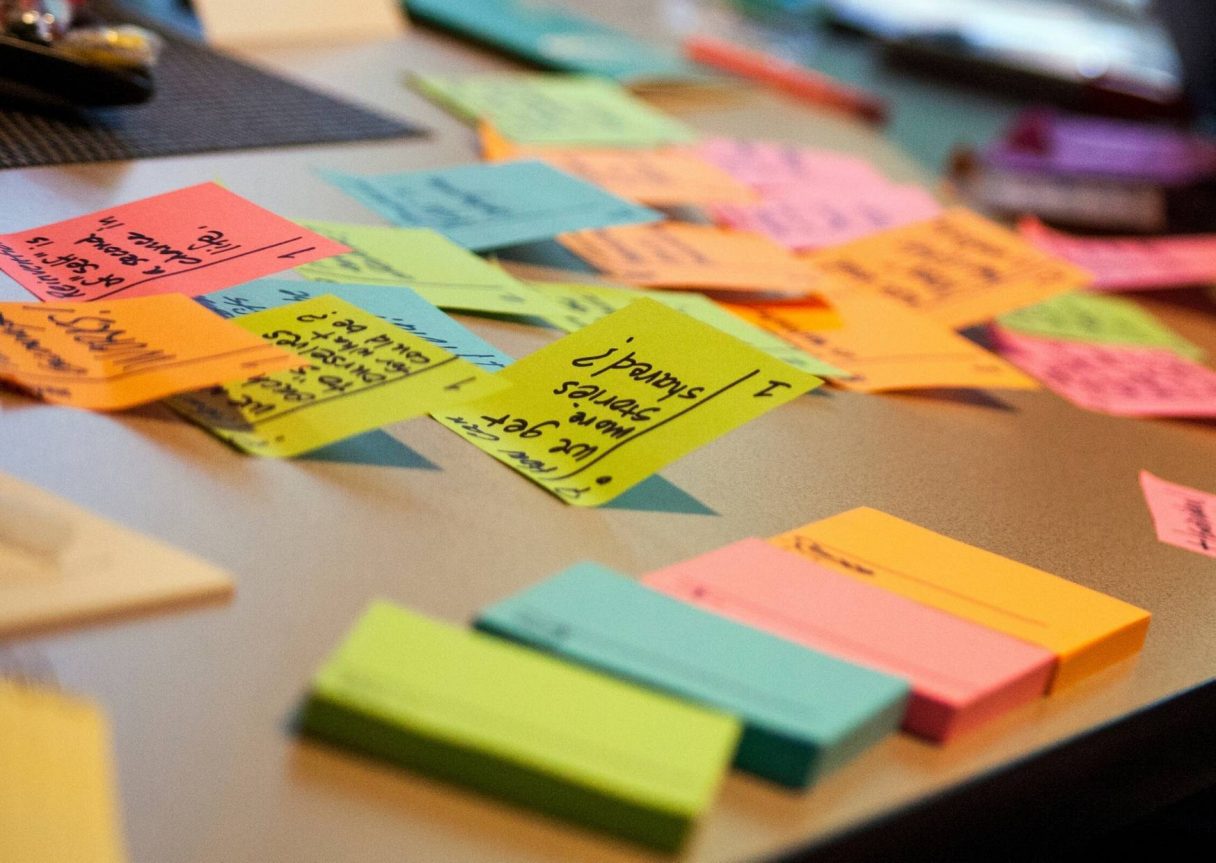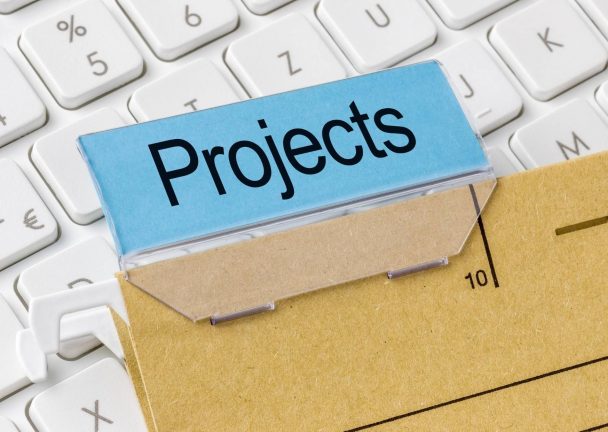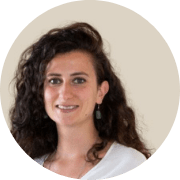Introduction to PBL
What comes to mind when you hear Project-Based Learning (PBL)? Have you heard it anywhere before? Or do you associate it with platonic love for innovative methodologies that are actually impossible to put into practice due to a constant lack of time?
As I am a believer in the potential of this teaching method in modern education and for today’s youngsters, I would like to propose some different perspectives without pretending to be overly enthusiastic about it. My goal is to be as realistic as possible and to consider its possibilities in our daily routines at school.
In reading this article, you can:
- Dissipate possible misbeliefs;
- Get a deeper understanding of what PBL really is;
- Reflect on the relationship between time and PBL (and maybe on our own relationship to time in general).
So, let’s start by observing PBL without any prejudice, in order to dissect some common myths – which I have come across very often in my career as an educator, and as a teacher trainer. Understanding what the real essence of PBL should be: a blessing!
Together, we are going to try to challenge rumors, legends, and mysteries about it, which circulate even in the best educational environments, as well as clarify any doubts and misinterpretations. This is all necessary to gain the needed confidence before planning a nice, manageable, and satisfying project-based learning experience. This can, finally, lead you, and your students, to a state of grace, by recovering a sense of usefulness in education
The difference with Projects and Inquiry-based learning

“PBL is not the “dessert” at the end of the meal” (Larmer & Mergendoller, 2011).
In a usual project, the teacher tells the students what they have to do or create after the completion of a lesson, unit, or module. A task is assigned, instructions are given, and the students execute those things. In other words, in this kind of project, students only become active at the end of a lesson, unit, or module, when they are asked to produce a certain kind of product.
In PBL, learning happens during the entire lesson, unit, or module. This means that content and competencies are actively acquired by students throughout the whole process.
PBL always starts with a driving question that aims at looking for solutions, usually to some real issue. After exploring a topic actively, collecting information, and gaining new insights, each student or group of students, will probably come up with different solutions to answer the same question.
In PBL, the product(s) that students create has the goal of solving something problematic that they care about (because the teacher somehow succeeds in making the topic relevant and meaningful for them)!
Normally, in PBL, students are expected to create a product and to learn not because the teacher told them to do so, but because they have accepted the challenge of addressing a problematic driving question. If learners are made to feel that they can do something to solve that issue, they will probably try and solve it… and learn a lot by going through the process!
Projects
- can be done alone
- about the product
- teacher-direct
- lack real-world context
- occur after the “real” learning
- all projects have the same goal
Project-Based Learning
- requires collaboration & teacher guidance
- about the process
- student-directed
- based on real world experience/problems
- real learning occurs through the project
- student choices to determine the outcome.
In Inquiry-Based Learning, students are investigators, whereas, in Project-Based Learning, they are problem-solvers, creators, designers, and builders.
Quoting Pearlman (2006) claims, “PBL puts learners into a students-as-workers setting where they learn collaboration, critical thinking, written and oral communication, and the values of the work ethic while meeting state or national content standards.”
In Inquiry-Based Learning, students carry out some research and look for information related to a certain question (which can lead to extra questions) and the activities reach their end when the findings are presented. In PBL, students work on the creation of a product that tackles a specific, real, and/or problematic issue, whose practical solution can also be useful to the community.
PBL definition and driving questions

Project-Based Learning is, in a nutshell, a method:
- student-centered, based on small-group work;
- that engages students in real world tasks;
- that simulates a professional situation;
- that includes processing of multiple information sources;
- where the teacher acts as facilitator for learning and resource guide.
“A teaching method in which students gain knowledge and skills by working for an extended period of time to investigate and respond to an authentic, engaging, and complex question, problem, or challenge.”
Buck Institute for Education (BIE)
PBL is a student-centered approach that can be used to solve real-life problems through a learning process.
“Extended period of time” is a very flexible and adaptable notion: I would say from one week to one school year (obviously, the duration of PBL activities also depends on how many hours a week are dedicated to creating them). PBL can involve different subjects – if required and, as already stated if you and your students have time to actually collaborate with other teachers and their disciplines.
PBL is a student-centered approach in which teachers guide students in facing a real-life problem and/or in managing a complex question, within a learning process that moves towards the creation of a useful public product. At the end of a PBL unit, students often share the knowledge and competencies acquired in presentations to a real and public audience.
PBL start with a driving questions (DQ’s)
- Exploration of a philosophical question
When do we grow up? Who has the power and how do they get it? - An investigation of an historical event or time period
Was it necessary to get Americans involved in the Vietnam war? What do we know about life in East Germany before unification? - A problem solving situation
How can we improve traffic flow in our city? What should we do about the cold lunched in our school cafeteria? - Examination of a controversial issue
Should the public have access to handguns? Should religion be taught in schools? Is war ever justified? - A challenge to design, create, or produce something
How can we create a mural that represents our community’s past and present?
How can we design a website to share our poetry woth the world?
How can we run a successful book club at our school?
Driving questions should be engaging to students or at least as much as possible…Open ended (there is more than one possible answer)…and aligned with learning goals. It can have a real world role for your students for example: How can we, as tour guides, plan a walking tour of the public art, monuments, or important places in our city?
DQ’s should not be Googleable
Google-able:
- Which trees grow in our community?
- What are the healthy foods?
- What are the major forms of modern art?
Open-ended:
- How can we create a field guide to trees in our community?
- Does it matter what food we eat?
- How can we create a gallery exhibition that explains the history of modern art?
E.g. Solve a problem – How can we conserve energy at the school? How can we create the perfect city?
The benefits of PBL
“Through PBL students develop deep content knowledge as well as critical thinking, collaboration, creativity, and communication skills”
Buck Institute for Education (BIE)
Remijan (2017) reported another very interesting positive outcome: students involved in PBL have shown an improved sense of citizenship, are more aware of the roles, responsibilities, and potential they have within their communities, and are more likely to act as change-makers in them.
Karaçalli and Korur (2014) have illustrated brilliant effects on student’s attitudes towards school and on their motivation! In fact, PBL gives students ownership of their learning, as well as the pleasure of discovering topics in connection with a real-world context, in a more flexible and meaningful way.
Last, but not least, PBL approaches can improve relationships in the classroom and at school: among students (who collaborate to solve a common “mission” that they care about), as well as between teachers and students -and sometimes also among teachers.
PBL can also exert good action beyond the school borders, by unleashing positive energy among community members that have possibly been involved in it.
Is PBL too complicated?

You can not only plan PBL based on the (little?) time you have; you can also keep it focused on a small driving question that focuses on only one or very few topics. The key is: making the right choices – realistic and, sometimes, even a bit cynical. Led by an enthusiastic process of exploration and creation, with PBL, you might be tempted to expand the scope of your activities and to multiplicate your efforts but… be careful! That might overwhelm you!
Also: it is true that the literature shows a lot of interdisciplinary PBL work but, you know what? You do not necessarily have to include other disciplines! It isn’t written anywhere that dealing with PBL corresponds to working with other teachers whose collaboration you absolutely need 😉 Again, it is about making sensible decisions, and perhaps cutting off what you do not need and/or what can make things unmanageable for you.
Instead of giving up before starting, you can limit PBL, by narrowing it down to what makes it real and meaningful.
You should always keep the limitations within and around you in mind: time, money, tools, human resources, competencies, etc. You can incorporate PBL, without getting angry, if you adapt it to what you have, without complaining about what you do not have. That way, your work will probably avoid stacking up and you will be able to glide through it comfortably.
PBL and time management

“I do not have enough time”
Really? Yes and no.
We will never have enough time at school – nor in life. But, interestingly enough, the opposite is also true: as the song says “We have all the time in the world… for love.”
Nobody loves it when somebody forces them to do or learn things that seem (or are) completely useless. And there is no deep learning without meaning. Plus, there is no learning without love.
PBL gives students ownership of their learning, as well as the pleasure of discovering topics in connection with their real contexts, and with concrete goals.
The time you and your students spend in PBL is probably a great investment because it provides students with useful competencies they will not lose after the final test, and which they will bring with them in their entire school career (with no need to use the extra time to repeat lessons they forgot!). And, besides this, PBL provides students with access to deep, meaningful knowledge and skills they will need – and use – many times in their life.
Planning a new activity and employing any method as a novice requires more time than just re-offering your students what has already been prepared. The first time you did something, you invested time in activities that are now basically “ready-to-go;” you feel familiar with them because the materials are already there.
The need for time is not an inherent fault in PBL. The need for time is part of life, anywhere, and always, especially when we aim at creating something useful and beautiful.
So the first time you plan PBL, you need some time, but then you will have that as an extra tool to take advantage of any time you need or want it.

When is time used wisely at school?
In finding answers to that question, we could write an encyclopedia, have never-ending debates, as well as fill magazines and tv shows. But, since I like summarizing and getting to the gist of the speech, I dare affirm: valuable activities at school should provide “education,” in the etymological sense of the word.
“I educate” corresponds to the Latin “e-Duco”, which literally means “I lead out.” In fact, the teacher can lead students out of ignorance, a lack of responsibility, and a sense of uselessness. An educator can “actualize one’s inclinations of the spirit and potential of the mind.”
I am not sure whether our time for learning is used wisely if people at school do not attempt to move towards that goal… at least sometimes.
If you have been reading this article up to this point, you are probably wishing to do something more for your students. I guess you are an educator who is eager to motivate them and to lead them “out of” the classroom walls so that they can learn and do something they will never forget. That is why I am telling you: PBL can be the path worth walking!
Do not be scared of taking the first steps into something new; enjoy them, since the best emotions, the most significant moments, and the most beautiful landscapes are the ones we have not explored yet. Remember that you can start small and keep PBL easy.
It can be a unique chance for students’ personal and civic growth, making them feel that they have made good use of their time spent in education. Their learning will be more long-lasting, and they also will gain more self-confidence.
17 PBL ideas for teachers
- Create an interactive family tree with voice-overs from living family members.
- Design an app with a specific purpose for a specific audience.
- Using the best that’s come from major world civilizations, design the perfect civilization. Identify critical characteristics, recources, and habits, etc.
- Measure the sociological impact of social media on local communities.
- Plant and manage a garden to feed local homeless/hungry.
- Solve a problem. This could be an individual, family, neighborhood, city, state, or country problem.
- Design an alert system to halt the spread of deadly disease.
- Redesign the complete school, including new content areas, grading, collaboration and communtiy involvement.
- Film a documentary on a social issue few people see.
- Redesign public transport in your city.
- Develop a brand new invention.
- Create and manage a YouTube channel for an educational purpose.
- Help local businesses increase environmental sustainability.
- Solve your parent’s problem of being too busy.
- Illustrate the global history of civil rights.
- Plan a school party.
- Find out all you can about a future profession you would like to work in.
Conclusion
I hope this article has clarified doubts and highlighted the real essence of PBL, as well as given you some sparkling curiosity to try it out with your pupils!
If you would like to get to know more about PBL we have several Erasmus+ courses on PBL and one online course on PBL too.
If you feel like sharing your impressions, please write your comments below! You can tell others what you liked, as well as share your experiences or express critical evaluations, doubts, or… questions!


Very interesting
Thanks a lot
I’m a glad you found it interesting! Thank you.
Hello, the article seems very interesting and inspiring. I am always searching for sth new, inovative teaching methods so that the process of education for me and my students would be not boring, interesting and fun.
Pbl is sth that I am interested in. But could you give any real life examples, the lessons plan or sth that would be more clare than this article?
Sincerely,
Agnė
Dear Ilaria Barbieri,
This is a very interesting and serious topic! I have really enjoyed your article!
I’ve never done PBL but I’m interested in it & I would like to try it.
I teach English as a foreign language for children at the age of 11 to 15.
Could you help me,please, with some examples for small driving questions in connection any topics you’d like to think of?
Do you think these are right questions for 14 -15 years old students: “What is happiness?” “What makes you feel happy?”
Best regards,
Orsi
Dear Orsi, this is a good question. 🙂 A detailed answer would require time – in fact, “driving question” is actually a topic that covers one day of my course about PBL [https://www.teacheracademy.eu/course/project-based-learning/]. To give you some advice here, I could say that driving questions often have formats such as “WHAT CAN WE do in our class to be happier?”. The more specific and personal the question is, the clearer the PBL mission.
A driving question should lead the students to the creation of a specific product or solution that aims at improving something in a community.
In the mentioned example, the community would correspond to the classroom, and a possible product could be a list of 10 weekly (or daily) practices to take care of the group’s wellbeing. To create that list, you could ask your students to use the language structures they are learning (modal verbs would fit perfectly in this example: “for our happiness, we could / we should”, etc).
Dear Ilaria, very interesting article.
I do agree on the importance of going into the concrete field. Actually an example of it, such as a topic and the way you can delve into it would be of great help.
Could you explain how you would transform, for instance “what is happiness” what makes you feel happy” in a PBL lesson?
Thank you very much
Luisa
Dear Maria Luisa,
I am glad you enjoyed the article. As I was saying above, in my reply to Orsi, possible DQ for that topic could be: “what can we do in our class to be happier?” or “how can we promote happiness at school/ at home..?” etc. 😉
Dear Ilaria Barbieri,
I see! Thank you so much!
Kind regards,
Orsi
Dear Agnė,
yes, to dig deeper into the PBL planning process, an article it’s not enough. That’s a skill that requires explorations and creativity. I have realized that, in our courses, that’s at the same time the most challenging and motivating task for participants!
It’s true there’s no magic formula that can generate PBL instantly. Anyway, exploring online samples could be helpful to get some inspiration. I could recommend, for instance, Edutopia Youtube channel or the Buck Institute of Education website.
Best,
Ilaria
Dear Ilaria,
Finally I read your article and more, I took some notes because I am looking forward to doing PBL with my students. I am preparing a workshop to share with my colleagues.
Thank you for the article. It is very important to understand that students need to be motivated to discover sollutions to problems and not to be told what they have to do.
take care,
Maria Luísa Veiga
Good Article for Project Based Learning
Thank you teacher for your article, very good information. We carry out projects in our school. We try to implement the applications you mentioned, even if it is difficult in the curriculum for primary school. In this sense, teachers need to be conscious. More awareness should be raised and asked. You explained it very well. Thank you.
Hello, I am happy to read your approach assumption, that are really life situation that we need to have and depend on in nowadays teaching procedures as I am really stuck right now on how how to deal with nowadays students behavior, I think this will be very interesting to be adopted but still have concern about time management with PBL , I would like to engage myself first and sail deeply before my students so i can guide them next for better outcomes.
Thanks a lot and I really appreciate it . we are really in need for such brilliant thoughts urgently!
Dear Ilaria, thank you for the article! It was so nice to refresh my knowledge about PBL, that I learnt from you two years ago on your course in Neaples!
However, PBL is hard to practice, if your students live in a society that discourages critical thinking, collaboration, creativity, and the active citizenship where you do something for community. In Hungary, very often this is the case, as students are not used to autonomous learning responsibilities and only consider teacher-given lectures to be “real learning”.
Buna Ilaria
Materialul este super interesant. Dupa participarea la cursul din febroarie 2023 – Verona, am aplicat metoda la clasa. Elevii au reactionat bine la metodă, au fost chiar incantati de strudiu individual in ritmul propriu. Am observat un progres in asimilarea materialelor prezentate, iar realizarea de produs final a fost un real succes.
Hello Ilaria
The material is super interesting. After participating in the course in February 2023 – Verona, I applied the method in class. The students reacted well to the method, they were even delighted by the individual study at their own pace. I noticed a progress in the assimilation of the materials presented, and the creation of the final product was a real success.
hi Ilaria, do you have a list of schools in the EU that are teaching according to the PBL model? thanks, borut